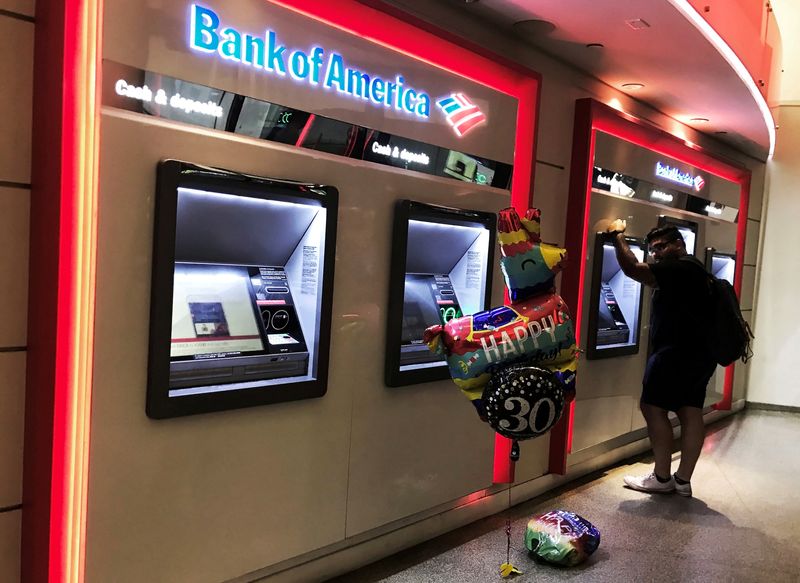By Manya Saini
(Reuters) -U.S. banks benefited from higher interest rates in the second-quarter, driving a rally in major indexes, but lower consumer spending, slower loan growth and the increased costs of retaining deposits cloud the outlook for the sector.
The results follow a tumultuous first quarter in which Silicon Valley Bank and two other lenders failed.
Signs of a revival in the investment banking sector, as higher rates and economic uncertainty have hampered deals and trading, also drove share gains.
The upbeat results sparked a rally in bank stocks with the S&P 500 Banks Index gaining 9.3% and the KBW Regional Banking Index rising 13.7% month-to-date.
Here are four charts that explain major banks' second quarter:
NET INTEREST INCOME
Net interest income, the difference between what banks charge on loans and pay out on deposits, at the largest U.S. lenders rose on higher U.S. Federal Reserve interest rates, but analysts cautioned that the benefit might soon fade as the central bank nears the end of its tightening cycle.
INVESTMENT BANKING
U.S. banking giants reported mixed results for investment banking in the second quarter, but investors have bought their stocks in the expectation of a second half revival in deal-making.
An outlier, Bank of America (NYSE:BAC) outperformed rivals by reporting a surprise gain in investment banking fees in the quarter.
DEPOSIT LEVELS
Deposits at most large lenders edged lower. The cost of retaining deposits is under investor scrutiny after bank runs led to the collapse of three lenders earlier this year, leading customers to move their cash to big banks or higher yielding alternatives.
Banks will likely face pressure to pay higher rates on deposits to lure or retain customers, which would erode their profits, analysts have said.
PROVISIONS FOR CREDIT LOSSES
Worries around the health of the economy accelerated earlier this year following the banking crisis.
Commercial real estate (CRE) loan portfolios have also emerged as a concern for the banking industry. The anxiety centers around office loans, as financing costs rise for many buildings that have seen big vacancies as staff continue to work from home.
Here are three charts on mid-sized banks' second-quarter results:
DEPOSIT LEVELS
While regional bank earnings in recent days have reassured investors that the crisis has subsided, regional banks are being squeezed as they pay customers more to retain their deposits.
NET INTEREST INCOME
Interest income at most banks rose over the prior year on higher rates, but declined sequentially, with analysts saying that the tailwind from higher borrowing costs that have boosted profits in recent quarters is nearing its end.
INDEX PERFORMANCE

Bank stocks were crushed during the first quarter crisis but have started to rebound.
The KBW Regional Banking Index has rallied 13.7% month-to-date but remains down 13.6% so far this year. In comparison the benchmark S&P 500 has gained nearly 19% year-to-date.